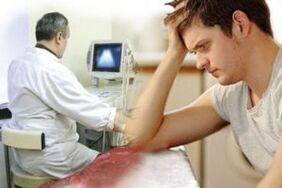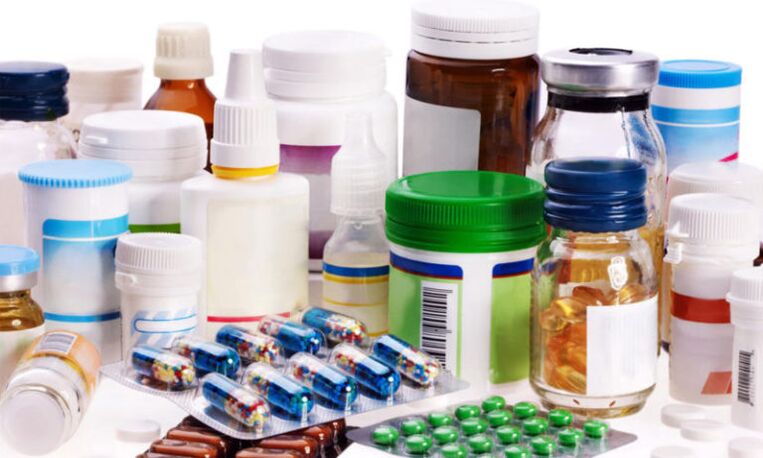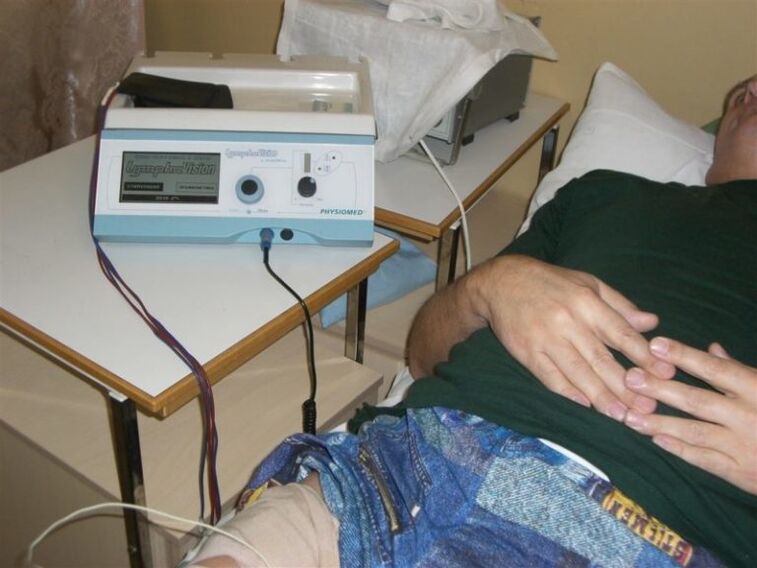
It's not enough to think about how to treat prostatitis in a man, you still need to approach this issue competently. The combination of traditional and non-traditional therapies will be effective. You should first undergo a thorough examination and only then seek an approach to competent treatment. Below you will learn how to improve your prostate.
Prostatitis Symptoms
To start treatment on time, you need to know how the disease manifests itself in the early stages. The first symptoms of prostatitis:
- pain in the perineal region;
- difficulty urinating;
- decreased sexual desire.
If the disease is chronic, then these symptoms are less pronounced and occasionally disturbing. Chronic prostatitis is characterized by periods of exacerbation.
Drug treatment of chronic prostatitis
Many people are wondering if it is possible to get rid of chronic prostatitis. I must say immediately, yes, but on one condition: you can not treat yourself. First of all, the doctor must find the right medication.
Prostatitis can take many forms, the choice of medication will depend on it.
If the disease has a bacterial route, antibiotics will not help. The exception is a test treatment in which an antibacterial agent is selected to confirm or rule out the infectious nature of prostatitis. Of course, the body is examined first, and only then it will be possible to engage in therapeutic measures.
Antibacterial drug treatment
Antibiotics are the first choice for prostatitis. They can have the following effects on the inflamed area:
- In a short time, antibiotics localize the infectious process.
- Inflammation of the prostate is quickly eliminated by eliminating the main cause of the disease.
- Antibiotics are prescribed when indicated.

In addition to antibiotic therapy, additional treatment will be required:
- prostate massage;
- medical gymnastics;
- physiotherapy;
- immunostimulating drugs;
- painkillers.
Treatment of chronic prostatitis is long and is carried out only under the supervision of a physician. If a patient has parenchymal or follicular prostatitis, it will be necessary to take high doses of the drug, only then the therapeutic effect will be achieved.
Antibacterial drugs are divided into broad-spectrum drugs and drugs containing fluoroquinolones.
How are antibiotics used? If the tests show a specific type of bacteria, the appropriate antibiotic is selected according to these indicators. Thus, depending on the type of microorganism, certain drugs may be appropriate:
- When ureaplasma, mycoplasma and chlamydia are detected, a number of macrolides, antibiotics from tetracycline and fluoroquinolones will be effective.
- Gonococci are eliminated by almost all antimicrobial drugs except the tetracycline series. The same can be said about Escherichia coli, where only macrolides will not be effective.
What medications are prescribed the most? Fluoroquinolones. These are the most potent antibiotics and are most commonly prescribed for prostate tuberculosis. They also have side effects. The first is neurotoxicity, which affects the brain, and the second is phototoxicity, which reduces the ability of cells to be exposed to ultraviolet radiation.
The fluoroquinolone group includes the following drugs:
- ciprofloxacin;
- levofloxacin;
- ofloxacin.
All of these drugs are not prescribed for the following diseases and conditions due to some side effects:
- diabetes mellitus;
- intolerance to one or more components;
- medicine;
- epilepsy;
- is under 18 years old.
Tetracycline antibiotics have recently been rarely prescribed if the prostate gland is inflamed. The reason for this is the negative impact on the human body.
Macrolides are the latest generation of antibiotics. They have a wide range of effects and are not as toxic as other antimicrobials. However, it is not so often diagnosed with prostatitis. Azithromycin is commonly used.
How it is treated, what kind of antibacterial drugs, only the attending physician will answer. The drug will be selected based on laboratory tests.
Effects of non-steroidal anti-inflammatory drugs
These drugs are used for congestive chronic prostatitis. Their behavior is as follows:
- improve blood microcirculation in the pelvic organs;
- normalization of secretory flow;
- reduce inflammation;
- has a beneficial effect on the process of urination;
- helps increase potency and improve the overall condition of men.
Nonsteroidal anti-inflammatory drugs are used only with a doctor's prescription.
Physiotherapy
The course of physiotherapy is selected individually in combination with drug treatment. Hardware physiotherapy can include the following procedures:
- Galvanized. Prostatitis is treated with direct current.
- Electrophoresis as a variant of galvanization with the use of drugs.
- Ultrasound. A rectal diffuser is used.
- Magnetotherapy. It is prescribed to many because there are no contraindications.
Physiotherapy methods are compatible with all drugs. For the most part, these methods have no side effects, except in cases of individual intolerance.

How to treat prostatitis with massage? This method also applies to physiotherapy. The task of massage is to eliminate stagnant secretions in the body. In addition, stimulation of the prostate improves blood circulation in this area.
All movements are performed through the anus. Massage is performed from the wall of the rectum. In this case, the doctor monitors the secretion. If fluid is not visible, this indicates a complication of the disease.
You will need an average of 10 massage sessions to achieve a therapeutic effect. You can massage yourself, but you need to learn this first, because spontaneous movements can only damage the rectum.
Physical activity is also important during illness. Therefore, the doctor prepares a series of exercises that will help to get rid of prostatitis in a complex way. Therapeutic gymnastics is aimed at improving the blood supply to the body and normalizing metabolic processes.
Analgesic therapy
Treatment of prostatitis is not limited to antibiotics, medications, and actions that improve microcirculation and NSAIDs. It is very important to cope with the pain that occurs during the disease. In this case, the doctor prescribes oral analgesics. In addition, men struggle with depressive states.
Their actions are aimed at temporarily reducing pain and improving glandular tone. The tablets are prescribed by a urologist based on the symptoms and individual parameters of the patient. Allergic background and co-morbidities in the patient are taken into account.
Traditional treatments
Traditional methods will be effective at the onset of the disease. Therefore, try to start treatment at the first signs of the disease.
The benefits and benefits of home remedies are as follows:

- Only natural substances that do not harm the body are used.
- Medications, such as some pharmacological agents, are not addictive.
- You can make a tool from existing products in a short time, but you will not have to spend so much.
If we talk about phytotherapy, it uses herbs, fruits, berries, roots. In most cases, it aims to eliminate inflammation in the prostate gland. The most popular recipes include:
- Application of pumpkin seeds.They contain zinc, which is necessary for the normal functioning of the male body. 500 g of seeds (not just fried) should be ground into powder. Then mix pumpkin seeds with 200 g of honey and cut into small balls the size of hazelnuts. Eat such a ball 2 times a day before meals, chew well. Keep the rest in the refrigerator. You can eat 30 pumpkin seeds before meals daily, this treatment will also improve.
- Hazel.The bark or leaves of the plant can be used. It should be remembered that the infusion of the bark takes twice as long. Infuse 50 g of leaves in 400 g of boiling water and let stand for half an hour. Keep the infusion for 1 hour while brewing bark. As a result, take 150 ml of the product 4 times a day.
To get rid of prostatitis once and for all, you need to follow many rules for a long time. First, there is a need for drug treatment, which should be combined with diet and active lifestyle. Second, physiotherapy is used, which includes hardware techniques, prostate massage and physiotherapy exercises. Symptomatic treatment, therapy of concomitant diseases and psychotherapy play an important role. All these actions should eventually lead to positive results.
































